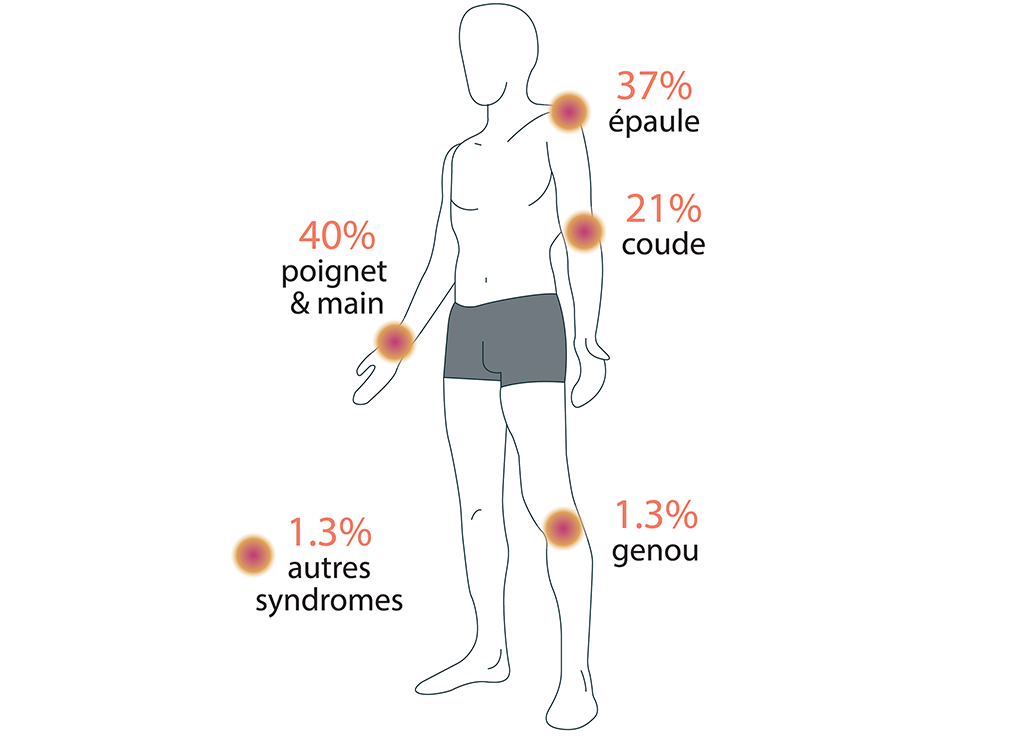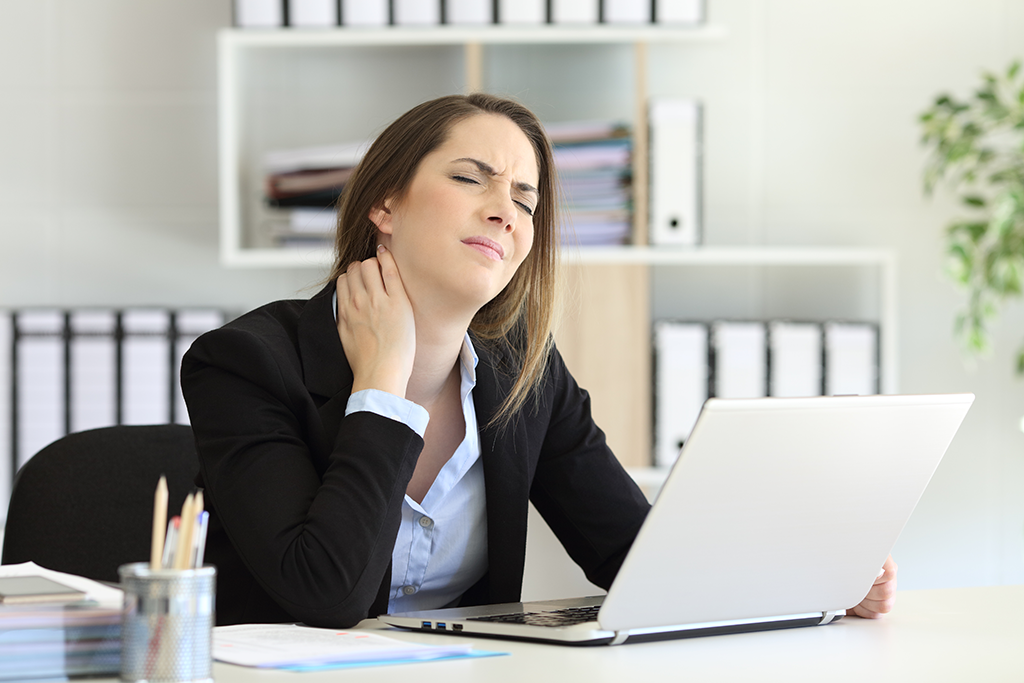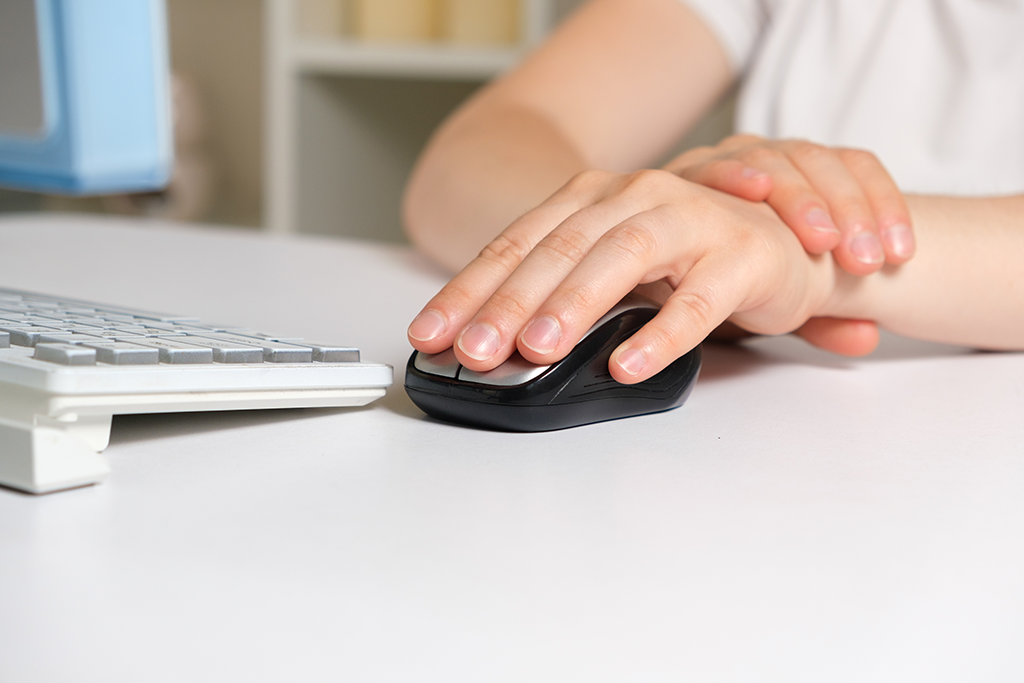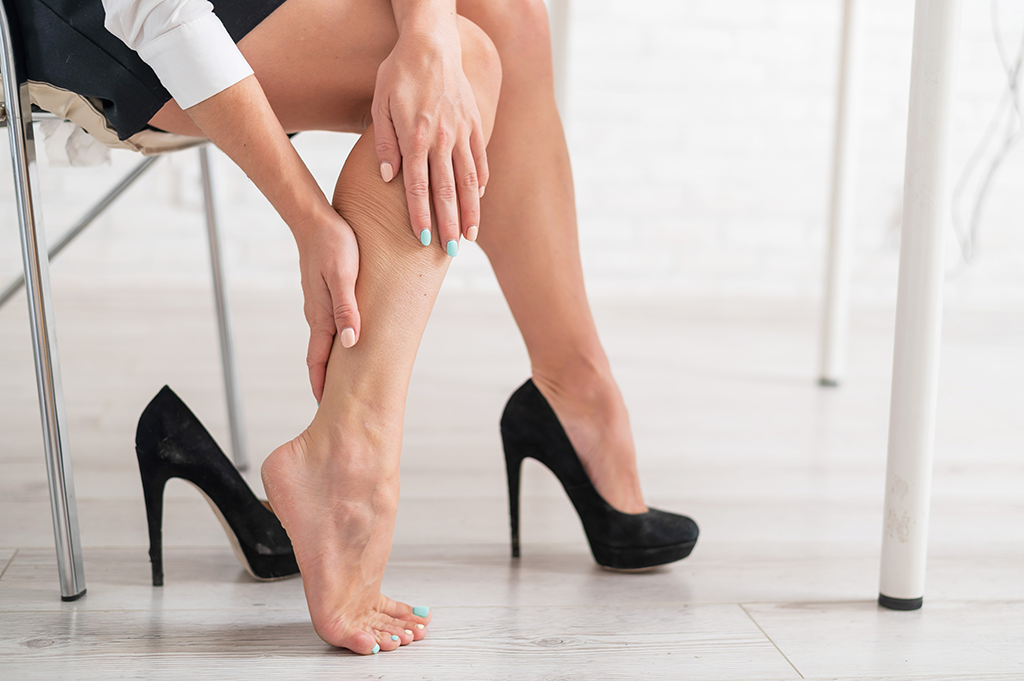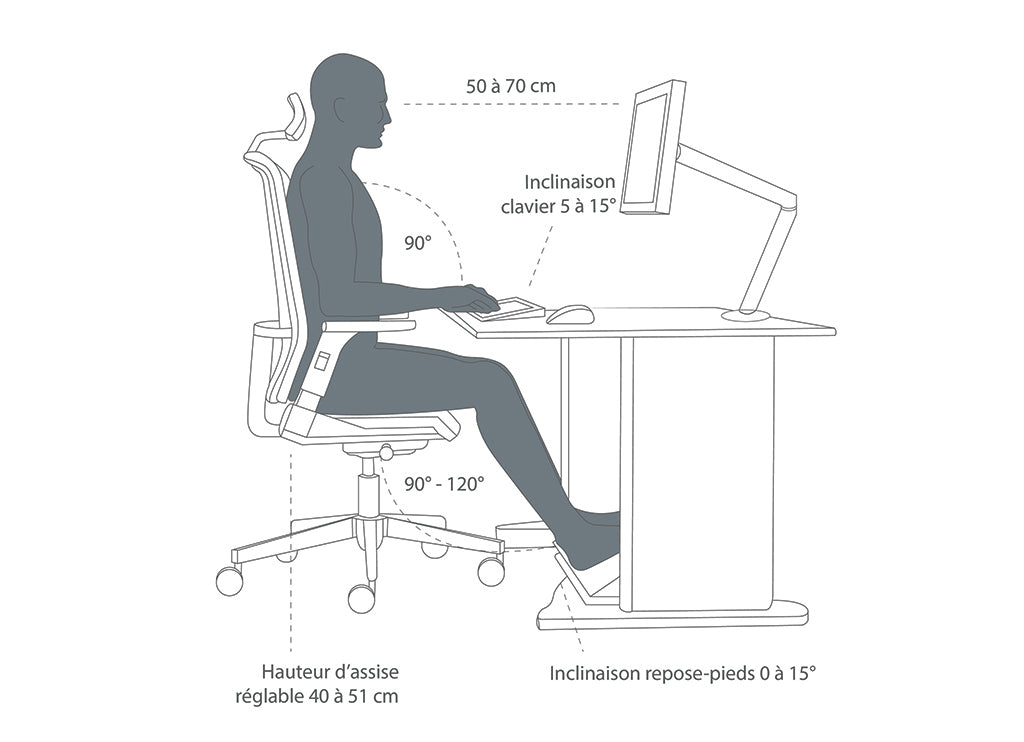What are musculoskeletal disorders, or MSDs? What are their symptoms? MSDs are the leading occupational disease in France, bringing together a set of pains in the muscles and tendons, causing uncomfortable sensations such as numbness, tingling, etc. These conditions cause serious disruption to daily life.
What are musculoskeletal disorders, or MSDs? What are their symptoms? MSDs are the leading occupational disease in France, bringing together a set of pains in the muscles and tendons, causing uncomfortable sensations such as numbness, tingling, etc. These conditions cause serious disruption to daily life.
Several risk factors can explain the appearance of MSDs.
Several risk factors can explain the appearance of MSDs.
About 98% of illnesses affect the upper body. Here is the percentage of areas affected by MSD:
About 98% of illnesses affect the upper body. Here is the percentage of areas affected by MSD:
• 37% of MSDs are located in the shoulders.
• 40% of MSDs affect the wrists and hands.
• 21% of MSDs concentrate on the elbows.
• 37% of MSDs are located in the shoulders.
• 40% of MSDs affect the wrists and hands.
• 21% of MSDs concentrate on the elbows.
Set of pains felt in the cervical region, from the upper back to the neck. It is often caused by poor posture, prolonged computer use, or tension in an upper body muscle caused by poor posture.
Set of pains felt in the cervical region, from the upper back to the neck. It is often caused by poor posture, prolonged computer use, or tension in an upper body muscle caused by poor posture.
Disorder related to compression of the median nerve as it passes through the carpal tunnel at the wrist. This nerve is responsible for hand and wrist movements. When compressed, which frequently occurs due to repetitive gestures like mouse clicks, the transmission of nerve impulses becomes difficult.
Disorder related to compression of the median nerve as it passes through the carpal tunnel at the wrist. This nerve is responsible for hand and wrist movements. When compressed, which frequently occurs due to repetitive gestures like mouse clicks, the transmission of nerve impulses becomes difficult.
Commonly called “back pain”, “lumbago” or “back pain”, it is characterized by pain localized in the lumbar vertebrae. This pain can radiate to the buttocks, or even extend to the back of the knee. It is the leading cause of disability before the age of 45.
Commonly called “back pain”, “lumbago” or “back pain”, it is characterized by pain localized in the lumbar vertebrae. This pain can radiate to the buttocks, or even extend to the back of the knee. It is the leading cause of disability before the age of 45.
Inflammation of a tendon (band connecting a muscle to a bone) mainly occurring in the elbow and shoulders. This inflammation causes acute pain which can have different origins. The healing process for tendinitis is often long.
Inflammation of a tendon (band connecting a muscle to a bone) mainly occurring in the elbow and shoulders. This inflammation causes acute pain which can have different origins. The healing process for tendinitis is often long.
Unpleasant sensations such as tingling, numbness, tingling or burning which can lead to pain in the legs. They are linked to poor circulation of blood in the veins.
Unpleasant sensations such as tingling, numbness, tingling or burning which can lead to pain in the legs. They are linked to poor circulation of blood in the veins.
MSDs represent the most widespread occupational health problem in all sectors of activity. Since 2013, the number of MSDs has increased by more than 60% in France. 1 in 3 employees have had to stop working due to health problems linked to poor work posture, with an average sick leave of 22 days.
MSDs represent the most widespread occupational health problem in all sectors of activity. Since 2013, the number of MSDs has increased by more than 60% in France. 1 in 3 employees have had to stop working due to health problems linked to poor work posture, with an average sick leave of 22 days.
• 8 out of 10 French people say they have suffered from pain.
• 8 million work stoppages are due to MSDs.
• Annual cost of €800 million.
• 8 out of 10 French people say they have suffered from pain.
• 8 million work stoppages are due to MSDs.
• Annual cost of €800 million.
A good working posture increases both productivity for the company and comfort and safety for employees. In 92% of companies, employees themselves develop emergency solutions to compensate for the lack of ergonomics at workstations. It is for these reasons that UNILUX imagines products with functional, ergonomic concepts and a harmonious and daring design. Some tips for diagnosing work posture:
A good working posture increases both productivity for the company and comfort and safety for employees. In 92% of companies, employees themselves develop emergency solutions to compensate for the lack of ergonomics at workstations. It is for these reasons that UNILUX imagines products with functional, ergonomic concepts and a harmonious and daring design. Some tips for diagnosing work posture:
● Use a footrest to tilt the foot 15°.
● Make sure the elbow angle is 90° or slightly obtuse.
● Keep your forearms close to your body and rest them on the armrests.
● Make sure the hand is in alignment with the forearm and support it with a wrist rest.
● Keep your back straight or slightly tilted back, with back support.
● Keep your head straight or tilted slightly forward.
● Adjust the screen height so that the top of the screen is at eye level.
● Prefer a worktop with a matte surface.
● Use a footrest to tilt the foot 15°.
● Make sure the elbow angle is 90° or slightly obtuse.
● Keep your forearms close to your body and rest them on the armrests.
● Make sure the hand is in alignment with the forearm and support it with a wrist rest.
● Keep your back straight or slightly tilted back, with back support.
● Keep your head straight or tilted slightly forward.
● Adjust the screen height so that the top of the screen is at eye level.
● Prefer a worktop with a matte surface.
